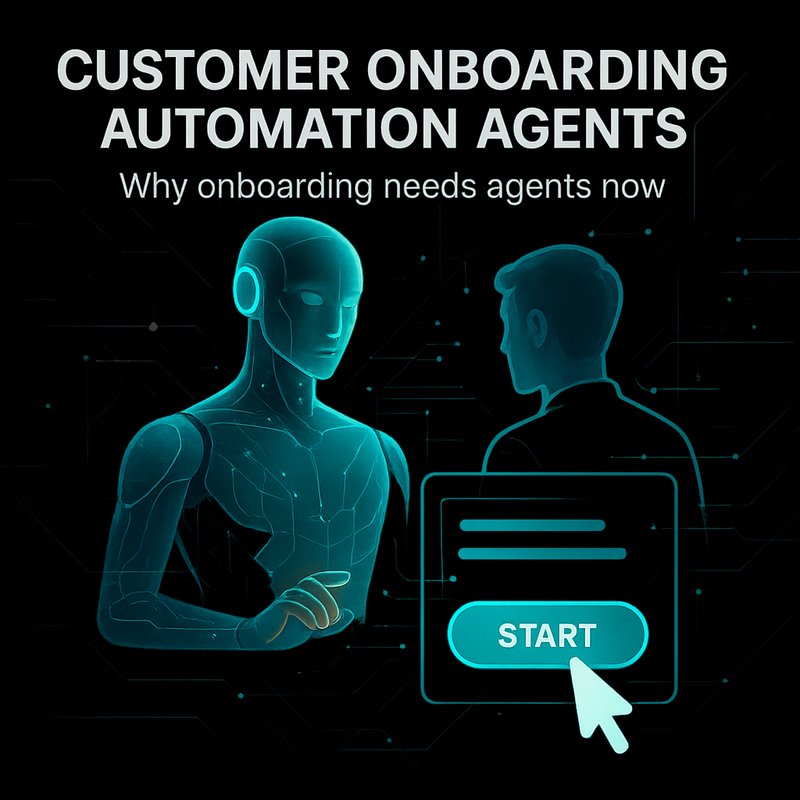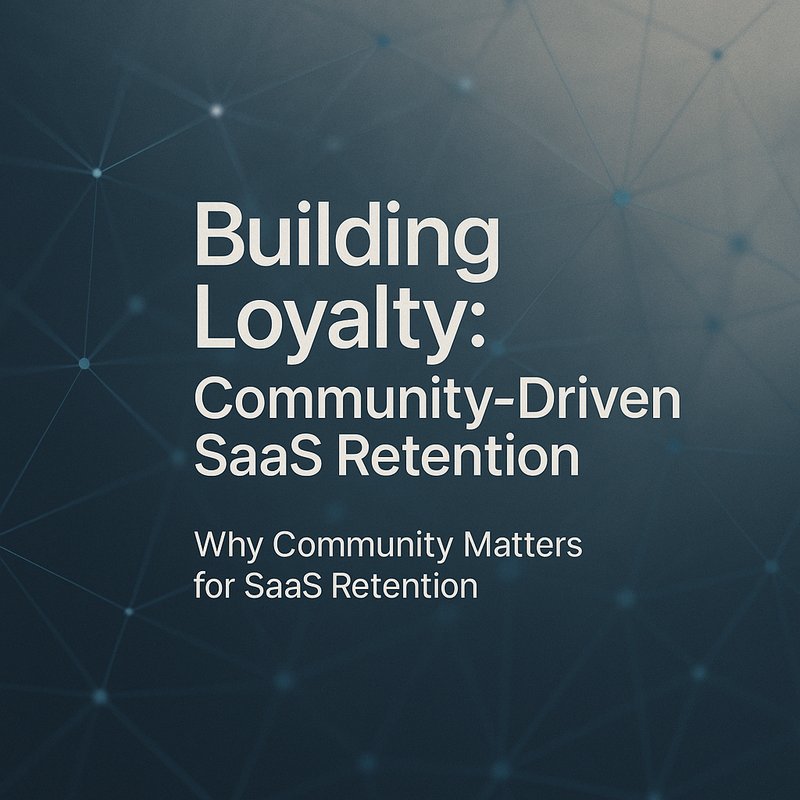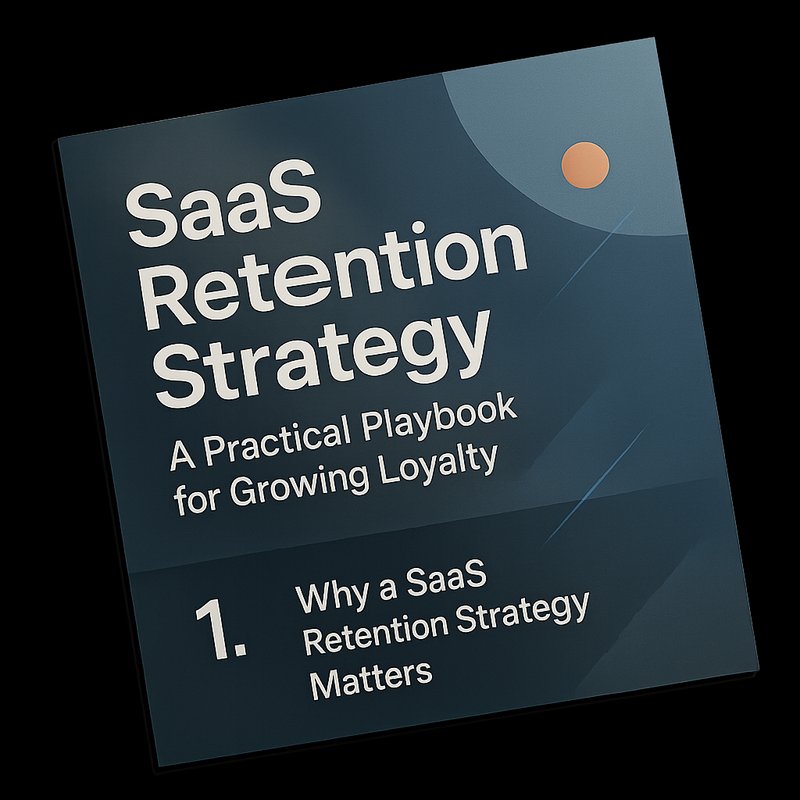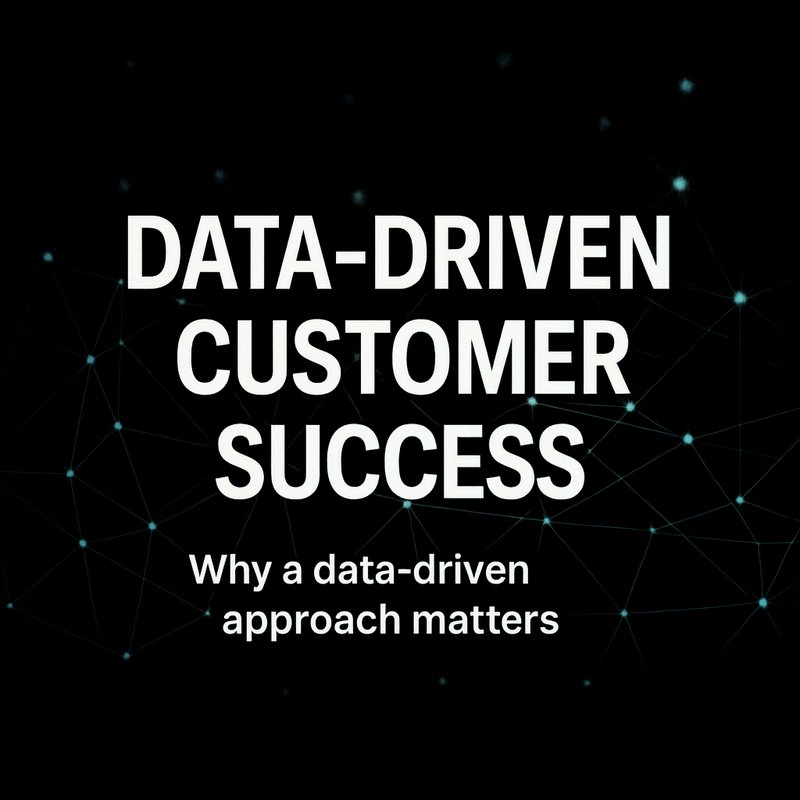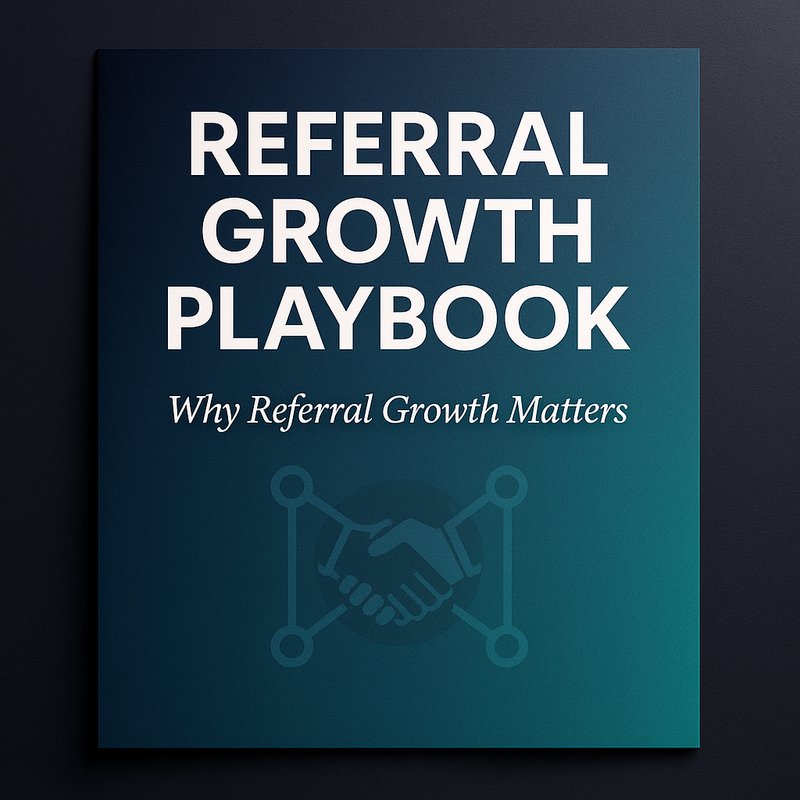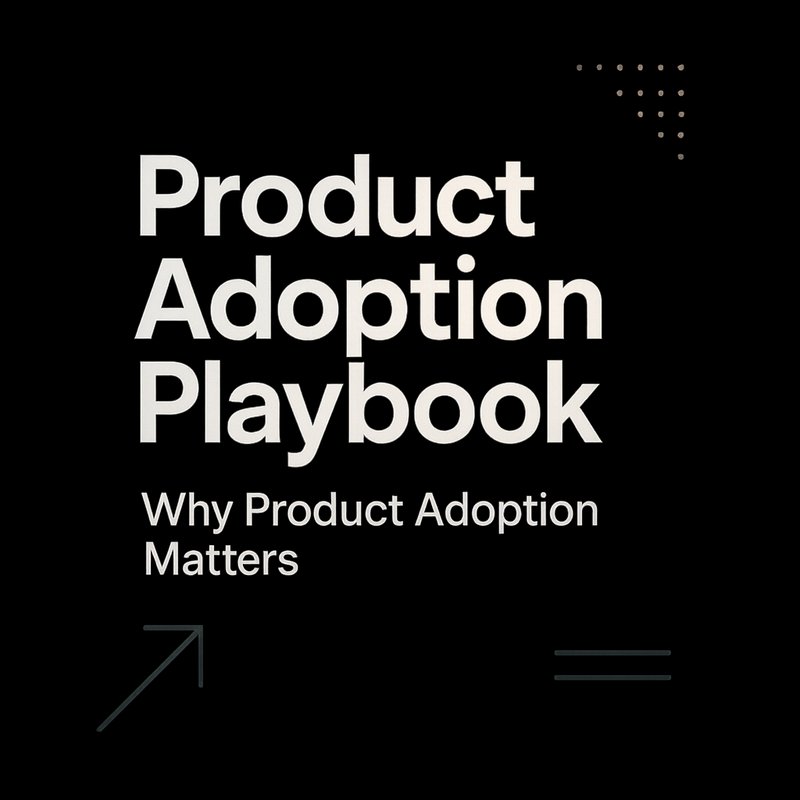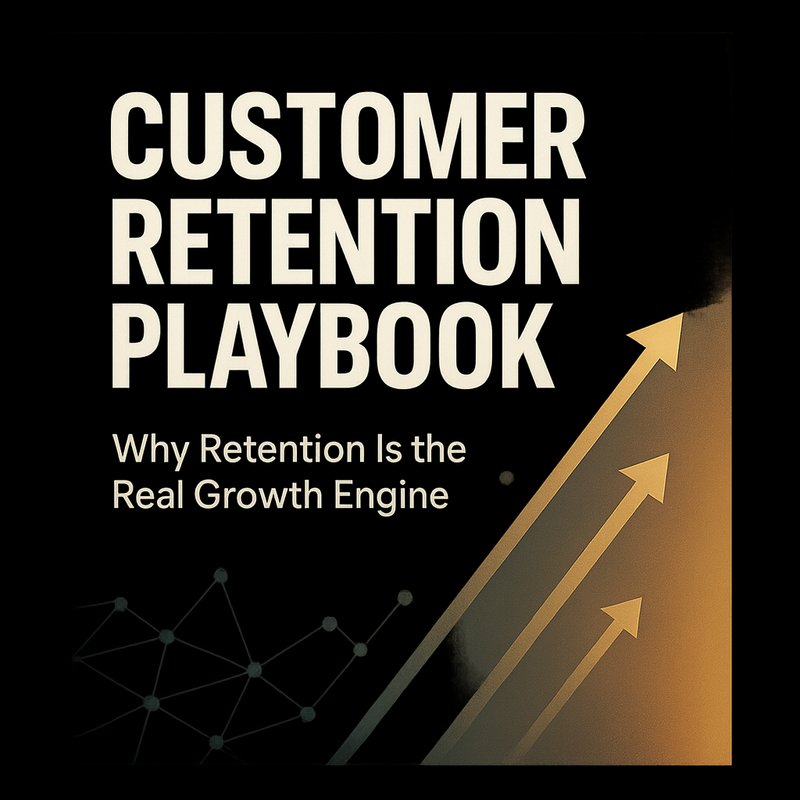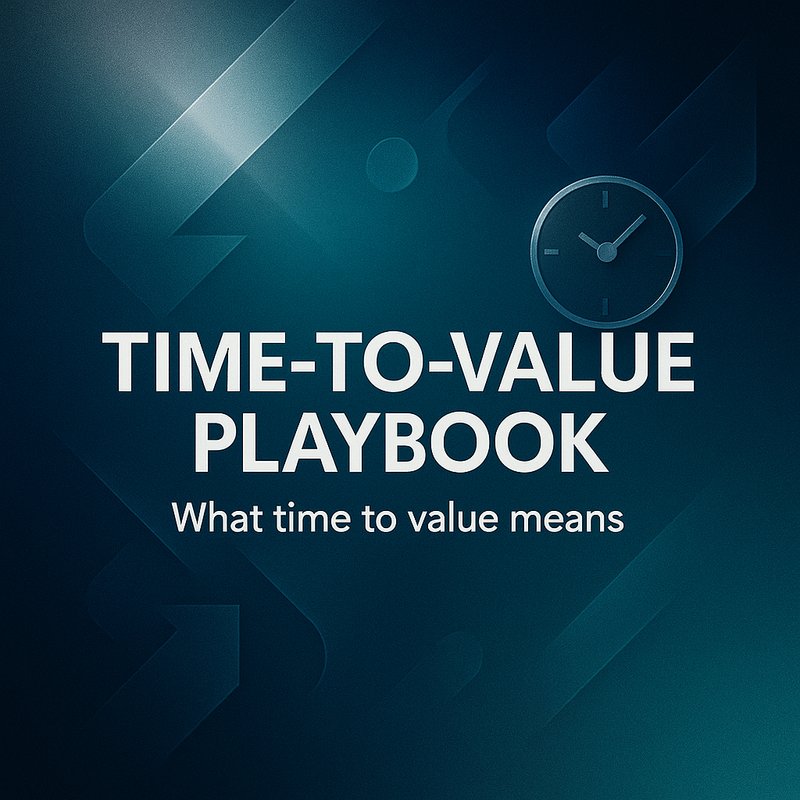Customer onboarding is the moment a sale becomes a relationship. Get it wrong and users churn. Get it right and customers stick, expand, and sing your praises. These days, onboarding still looks like manual emails, scattered documents, and a lot of guesswork. What if small software teammates handled the repeatable parts: welcome flows, checklist tracking, documentation parsing, usage nudges, and handoffs to support or success? You free humans to build rapport and solve real problems.
This guide shows how to design customer onboarding automation agents that actually help people. You will get agent roles, integrations, a 6 week pilot plan, metrics to measure, real examples, and prompts you can reuse. No buzzwords. Practical steps.
Why onboarding needs agents now
The reality is onboarding can make or break retention. Common pain points I see:
- New accounts get a generic welcome email and then radio silence.
- Important legal or compliance forms are missed.
- Product setup stalls because a small config was misunderstood.
- Customer success teams spend hours digging through docs to answer simple questions.
- Early usage drops off and nobody notices until renewal time.
An onboarding agent handles predictable tasks and keeps a human in the loop for judgment calls. It reduces busy work and helps customers reach value faster.
Now, you might wonder: will an agent sound robotic? Yes, if you let it. The trick is to design agents to draft, check, and nudge — not to pretend to be your head of success.
The agent lineup that actually helps customers
Treat agents as roles, not scripts. Each one has a narrow job and clear handoffs.
Welcome and Setup Agent
Purpose: Get new customers past first milestones in hours, not days.
What it does:
- Sends a personalized welcome message with next steps.
- Creates a setup checklist in the customer portal or task system.
- Verifies the account has required items: payment info, admin users, API keys.
- Schedules an onboarding call if the checklist stalls.
Why it helps: First impressions matter. Quick, accurate onboarding lowers dropoffs.
Example integration: Connect this agent to your CRM and calendar, and have it create tasks in your project tool like Asana or Jira.
Document and Compliance Agent
Purpose: Make forms painless and findable.
What it does:
- Parses uploaded contracts, NDAs, or configuration docs using OCR and natural language processing.
- Extracts required fields and highlights missing signatures or clauses.
- Notifies legal or the customer with clear actions and attaches the relevant snippet.
- Stores safe metadata and version history for audits.
Why it helps: Customers and internal teams waste less time hunting for the right clause. For parsing, tools like OpenAI (https://openai.com) or Anthropic (https://anthropic.com) can help draft summaries, with careful PII handling.
Product Activation Agent
Purpose: Turn signups into active users quickly.
What it does:
- Detects whether the product was configured correctly by checking logs or API responses.
- Runs a small health check or smoke test on the account.
- Creates a guided tour or sends step-by-step instructions when a critical step fails.
- Escalates to a human if automated fixes do not resolve the issue.
Why it helps: A failing initial config kills momentum. Automated checks catch it before the customer gets frustrated.
Education and Nudge Agent
Purpose: Help users hit aha moments by delivering the right content at the right time.
What it does:
- Monitors product usage signals like events, activity, or feature access.
- Sends contextual tips, short videos, or links to docs when users veer off the success path.
- Triggers in-app messages, emails, or Slack notifications to the account owner.
- Recommends next steps for success managers to follow up on.
Why it helps: Timely nudges boost activation and reduce early churn.
Handoff and Routing Agent
Purpose: Seamless transfer from onboarding to account management.
What it does:
- Enriches account records with firmographic and usage data.
- Suggests an assigned account manager based on territory, size, or product mix.
- Creates a handoff summary with key milestones, blockers, and next actions.
- Posts the handoff to internal channels so the new owner can pick up easily.
Why it helps: Handoffs that are messy kill momentum. A clean summary saves meeting time.
Knowledge Base and QnA Agent
Purpose: Put answers where customers look.
What it does:
- Indexes support docs, release notes, and forum threads.
- Answers customer questions in chat or email with citeable snippets and source links.
- Flags uncertain answers for human review.
- Tracks which knowledge base articles actually lead to success.
Why it helps: Faster answers decrease friction and reduce support load. Use a search index and vector search for better matches.
Renewal and Expansion Guard Agent
Purpose: Spot accounts likely to renew or expand and those at risk.
What it does:
- Monitors usage, billing, and support tickets.
- Scores accounts for renewal risk or expansion opportunity.
- Sends playbook suggestions to success managers: outreach scripts, discount rules, or feature demos.
- Creates timely alerts for executive review if a large account slips.
Why it helps: You get more renewals and sell more expansion when you act early.
Toolchain and integrations that matter
You do not need one giant platform. Use a router or integration layer so agents talk to many apps. Typical integrations:
- CRM: Salesforce (https://www.salesforce.com), HubSpot (https://www.hubspot.com)
- Analytics and events: Google Analytics (https://www.google.com/analytics), Segment, Mixpanel
- Communication: Slack, Microsoft Teams, email
- Document storage: Google Drive, Dropbox, Box
- Billing: Stripe, Chargebee
- Models and LLMs: OpenAI (https://openai.com), Anthropic (https://anthropic.com)
- Search and vector DB: Pinecone, OpenSearch
- Orchestration: if you have a router like Neura Router (https://router.meetneura.ai) it helps connect many models and APIs
Pro tip: Start with the data your success team already trusts. Agents should be event driven: when a new customer signs up, when a document is uploaded, or when usage drops below a threshold.
One more pro tip: keep approvals for money and major concessions. Let agents draft, humans sign.
A six week pilot plan that proves value
Run a tight pilot with a narrow goal. Here is a practical path to ship something useful fast.
Week 1: Map the flow
- Choose a high volume, high impact pain: slow activations, messy handoffs, or missed compliance steps.
- Document all data sources and the current manual steps.
- Pick success metrics: time to activation, number of handoff errors, or first month retention.

Week 2: Connect core systems
- Integrate CRM, product event stream (Segment or similar), and your document store.
- Verify test records flow both ways. Make fake signups and walk through scenarios.
Week 3: Launch Welcome and Setup Agent
- Run it in suggestion mode so humans approve messages and checklist changes.
- Track acceptance rates and time saved.
Week 4: Add Product Activation and Document Agent
- Wire up smoke tests and document parsing.
- Test edge cases like missing fields or failed API calls.
Week 5: Add Knowledge Base QnA and Nudges
- Start with a small set of high value articles.
- Send nudges based on two or three key events.
Week 6: Measure and expand
- Compare time to activation, onboarding calls per account, and early retention against baseline.
- Decide which agents go fully automatic and which remain suggested.
Ship the smallest useful thing first. Fix the common blockers and iterate.
Metrics to watch
Keep measurement simple and tied to retention and revenue impact:
- Time to first value (hours or days)
- Percentage of accounts completing setup within X days
- First month retention rate
- Number of support tickets in the first 30 days
- Time saved per onboarding rep per week
- Handoff error rate
- Activation event completion rate
- Net promoter score for new customers
Leading indicators like faster activation should lead to better lagging metrics like retention and expansion.
Real examples that actually work
Example 1: SaaS with complex setup
A mid market SaaS had a 45 percent dropoff within two weeks because customers hit a configuration wall. They built a Product Activation Agent that ran a smoke test and automatically created a ticket when the test failed. The onboarding team stopped spending hours troubleshooting the same issue and activation rate rose 28 percent.
Example 2: Compliance heavy onboarding
A platform selling to healthcare clients had contracts and consent forms to collect. A Document and Compliance Agent parsed uploads, flagged missing signatures, and created a clear checklist for each client. Audit time dropped and legal no longer missed critical clauses.
Example 3: Ecommerce integrations
A payments provider used an onboarding agent to verify API keys and sandbox transactions. New merchants got a quick report showing what broke and how to fix it. Merchant success rose and support calls fell.
What strikes me is how small, focused automation adds up. Automating the repetitive parts gives humans time for the parts that need judgment.
Prompts, templates, and guardrails
Agents need clear prompts and limits. Here are practical examples you can adapt.
Prompt for Welcome and Setup Agent:
"Draft a short welcome email for new account ACME Corp. Include: 1) a 3 step setup checklist, 2) scheduled 30 minute onboarding call with link to calendar, 3) links to getting started docs. Keep tone friendly and concise. Mark any missing info for human follow up."
Document parsing prompt:
"Extract signer names, sign dates, jurisdiction, and any custom clauses from the uploaded PDF. If a required clause like data processing or export control is missing, flag and include the exact missing paragraph reference."
Nudge rules:
- Send a first nudge after 48 hours of inactivity on critical steps.
- Limit nudges to three messages in 14 days unless a human opts in to more outreach.
- Always include a clear unsubscribe or pause option for communication.
Logging and audit:
- Every automated action must log source, timestamp, and confidence.
- Provide an undo path for all agent edits in the CRM or docs.
The catch? Agents learn from messy data. Validate before full automation.
Security, privacy, and compliance
Onboarding touches sensitive info. Safeguard it.
- Use encryption in transit and at rest.
- Role based permissions for agents and human users.
- Audit trails for every automated action.
- Never send PII to third party models without legal signoff.
- Maintain consent records for communications.
- If you operate in regulated industries, loop in legal early.
If you use LLMs for parsing, consider hosting models internally or use vetted vendors like OpenAI (https://openai.com) with data usage contracts.
Adoption and change management
People fear losing control. Here is how to get buy-in.
Start in suggestion mode.
Show the wins with a dashboard of accepted suggestions.
Include reps and success managers in the review loop early.
Train teams with short videos and cheat sheets.
Celebrate time saved and fewer errors.
Trust builds slowly. Let teams opt into automation as it proves itself.
Pitfalls and how to fix them
Problem: Agents send too many messages and annoy customers.
Fix: Throttle nudges, consolidate information, and always let customers opt out.
Problem: Parsed documents miss key clauses.
Fix: Improve OCR quality, add validation checks, and route uncertain parses to a human reviewer.
Problem: Reps ignore agent suggestions.
Fix: Show why the agent suggested the change and make accepting a suggestion a quick single click.
Problem: Bad event tracking drives wrong nudges.
Fix: Audit event instrumentation and add smoke tests for critical events.
Tools and models that help
You do not need the fanciest model. Use reliable ones.
- For language tasks and parsing: OpenAI (https://openai.com), Anthropic (https://anthropic.com)
- For events and routing: Segment, Mixpanel, Google Analytics (https://www.google.com/analytics)
- For document OCR and CV: Google Cloud Vision, Amazon Textract (https://aws.amazon.com/textract)
- For orchestration: a router that connects many models and APIs like Neura Router (https://router.meetneura.ai)
- For search: vector search with Pinecone or OpenSearch
Treat agent outputs as drafts. Give humans the chance to edit before publishing official communications.
Final thoughts
Onboarding is not a checklist, it is the start of a relationship. Automate the predictable parts so your people can focus on listening, teaching, and fixing real problems. Start small, keep clear logging and approvals, and measure the impact. The bottom line? Faster activation, fewer early tickets, and customers that stay longer.
